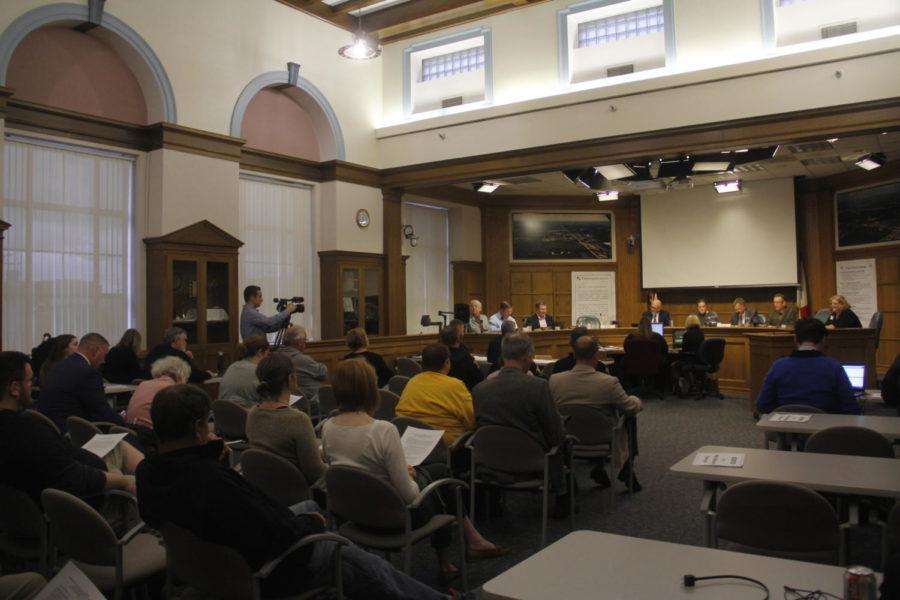City council to discuss parking, rental caps
November 12, 2018
The Ames City Council directed staff to explore and create options relating to parking in downtown Ames at their Oct. 16 meeting. These options included looking into the costs associated with a comprehensive parking study, considering the different wants and needs of employee parking and evaluating parking rates.
As a result, city staff created three options based on research, community feedback and previous discussions at city council meetings.
The first of these options is to start a comprehensive parking study to look at parking supply and demand, parking alternatives, a report on area developments and community outreach.
“It will be important to have an outreach plan that focuses on Downtown business and property owners regarding existing and future needs,” according to city council documents. “While staff expects to leverage as many digital communication/outreach tools as practicable, it does not feel the study requires expansive public meetings or workshops”
The project is projected to cost $70,000 and would not be funded through the city’s parking fund, but rather through a combination of the general fund and the unobligated Road Use Tax Fund.
The second option would give immediate relief to alleviate issues relating to employee parking in the downtown area. Currently, employees parking in the 4-hour parking spaces have to move their car and leave their area of work periodically to pay at the meters.
Employees and business owners in the downtown area have complained that there is a measurable amount of productivity lost with the current set of parking options. Option two would allow for employees to buy a “hang-tag” for five dollars to have unlimited parking in the 4-hour parking stalls. Night parking restrictions would still apply.
Staff has concerns with making sure parking passes are only being given to legitimate employees, and there are general concerns that this could lower the circulation of cars in the downtown area, reducing the amount of money businesses receive, according to city council documents.
The third option would implement the revamping of all current meters in the downtown area to accept credit cards, which would reduce the loss in employee productivity from “feeding the meters.”
The cost of this option would reach nearly $197,340, meaning council would also have to consider increased rates to cover the transition costs.
Staff recommends option one, as it allows for more solutions to parking in the downtown area.
The city council will also provide direction on an ordinance relating to short term rentals in Ames. With the passage of a rental ordinance in May, the City of Ames limited the number of rental properties within seven neighborhoods near campus to 25 percent.
As there is no language within Ames’ code that differentiates or defines short term rentals compared to any other rental, services like Airbnb would contribute to the rental cap. To avoid this, city council is looking into three options to define these short term rentals.
Option one would allow for an annual licensing or a one-time permit of short term rentals for one-family and two-family occupancies that have short term rentals.
“The City Manager’s recommendation was to proceed with the proposed zoning classifications with an annual licensing option and to create a new Municipal Code chapter for licensing,” according to council documents.
Option two would allow for new classifications of multi-family residencies with short term rentals, and gives a different path for those residences to get their short term rental approved.
Option three would change the zoning standards for houses in the medical districts in Ames. under current zoning standards, short term rentals are not allowed within houses near Mary Greely, so the City Council is looking at options to change this.
“Since the Council delayed any final decision regarding STRs pending further information being provided, Staff is now requesting final direction so that an ordinance can be written,” according to council documents. “The Council can incorporate any, or all, of the three options reflected above in this directive.”







